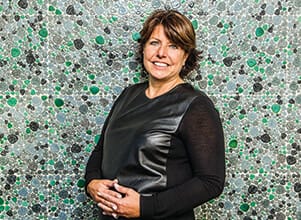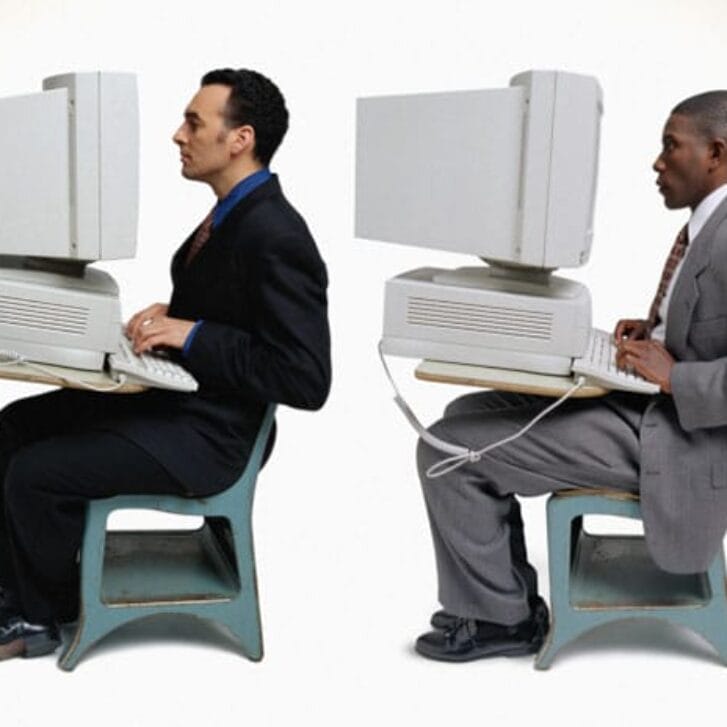Jamie Moldafsky, WG’89, sees herself as the ultimate customer champion for one of America’s biggest banks. To become the chief marketing officer at Wells Fargo, she has taken chances and great leaps in her career—working at American Express before going to a small private toy company, working abroad then running a business for Whirlpool in an industry in which she had never been prior, to her current C-suite spot. In that span, she also found time to get an executive MBA at Wharton—as well as start a family. Her career success reflects not a grand master plan, but her ability to be open-minded, to know herself and to leverage her strengths at work she’s enjoyed.
WHARTON MAGAZINE: In branding and marketing, companies refresh messages every so often. In careers, when should we refresh personal brands?
JAMIE MOLDAFSKY: I do think generally you want to refresh your brand before it gets old, at the right point of “the curve.” When you’re right at the top of the curve, there’s a point at which it’s going to fall off a little, and you want to change before it falls off. It’s the same way with careers, at least for me. You clearly have a learning curve when you’re in a new role and so you want to be there through your learning curve and you want to be there when you’re at your high performance because that’s when you’re of most value to your company. But there’s this window where you know that you’re loving what you’re doing, but six months or a year from now, if you’re not loving what you’re doing, you’re going to be bored. And that’s the right time to move.
WM: How has that worked for you?
MOLDAFSKY: I’ve been really lucky. I get to experience new things as part of what I do all the time, and that keeps me engaged and excited about what I do. I’ve never sat in a role that hasn’t changed for more than probably a year. … Part of it is I seek it out.
WM: How have you felt held back in your career as a woman?
MOLDAFSKY: I never thought of it as held back; I think of it as everyone has their challenges and everybody has things that they have to compensate for or be conscious of in how they engage and how they interact. That’s a common theme among all diversity conversations. There are so many ways in which people are different, and being in an inclusive environment is important. Some environments are more inclusive than others, and you have to figure out how to leverage what you do in a way that allows for it to be more inclusive.
WM: Do you have advice for current students or recent grads about work-life integration?
MOLDAFSKY: I had in some ways the benefit of not having kids until later, and so I was fairly established in my career and you could argue whether that makes it easier or harder. But I guess the advice I would have is to not think that there is only one right way to do it. It’s a little bit about having that optimism and that positive confidence to know that it will work out no matter what you choose, and that family and friends are critically important to being a “whole” leader.
I’d say [with] the exponential change in the world right now, you don’t know how to fully plan anyway. Nobody knows whether in five years 90 percent of the work force will work remotely, or people will be able to work three-day- a-week jobs … no one knows because it’s just going to change with technology and the nature of new companies, and different industries popping up with new models and cultures.
It’s not trying to predict what that future’s going to look like. Instead, it’s about being open to the fact that, if anything, there are going to be more options in the future versus fewer, and so doing what’s right is a very personal decision.
WM: Can women have it all?
MOLDAFSKY: What I always say to people is, “It’s all in your own head.” If “all” is defined as everything in your life being 100 percent, then, no, because you only have 100 percent. So the theory behind having it all suggests being home all the time with your kids, being at work all the time in a career that you love, being a partner to your partner all the time, and one can’t physically do it. So there is a tradeoff.
Having it all means being comfortable with the tradeoffs you’re making, and I think you can do that all the time. But you have to decide at each and every point in time what’s important to you and understand that the tradeoff doesn’t make you less successful.
WM: What Wharton knowledge do you still leverage?
MOLDAFSKY: Maybe this is partly because I did get the degree while I was working, [but] I think it gets incorporated every day in real time. A lot of it is a mindset and a way of thinking. Particularly with Wharton and the analytics background, for me what’s been great is being able to ground a lot of what I do and a lot of the leadership I provide into the financial side of things in the analytics, and yet still be able to lead in a way that enables me to move quickly and make decisions quickly. It’s a little bit of the 80/20. It’s not trying to take everything to 100 percent certainty if you don’t have to, but being sound and reasoned based on data and leveraging intuition and judgement as well.
Editor’s note: Read more about Wharton women and leadership and access the five other individual Q&As in our cover article, “On, About & For More Leadership.”
























